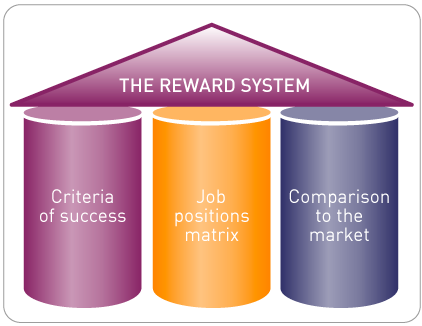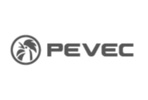Services
Models of rewarding and motivation
Models of rewarding, especially material rewards, represent a large share of the total costs of a company (10-70%, depending on the area of work). Therefore, they must not be ignored in any way or established on "rough estimate" measures.

Effective models of rewarding are not "salary increases", but finding an optimal rewarding programme that a company can afford, that will satisfy the employees and that is adequately positioned on the market.
In other words, models of rewarding and motivation should be placed in the business reality of the company because otherwise they do not make sense. That is, they must be connected to the business strategy of the company and with employee needs. Only in this way will the needs of the company (owner) as well as the needs of the employee be satisfied, and only such a balanced approach ensures a high engagement and motivation!
Artis Rei will help you create optimal models of rewarding and motivation that:
- connect the reward with the achievement of individuals, teams and/or company
- ensure competitive and different "reward packages"
- ensure optimal amounts with regard to the market offer
- are communicated to the employees and accepted by employees
- are communicated to and accepted by superior managers
- positively influence the engagement and motivation of employees
... for those who wish to know more...
In order to achieve the previous, we have to get acquainted with your business operations, strategy, and key excellence indicators (key performance indicators KPIs), demographic characteristics and the organizational culture itself.
Therefore, we shall:
- review the existing rewarding model and determine the extent of its relation to the business strategy
- conduct additional studies of the organizational climate and of perceptions of workers to find out how employees perceive the existing rewarding system
- determine which message the existing reward system sends employees in relation to what is important to employees and what is actually rewarded
- conduct an internal comparison of work positions
- define salary grades, bonus schemes and benefits for each group of jobs
- conduct a market comparison of jobs and define optimal amounts for each group of jobs
- work out a model of rewarding for managerial / key positions
- assist you in communicating and implementing the established models of rewarding
Salary grades, bonus schemes and benefits
How much to pay employees, and at the same time not look at them leave you for a competitor? This is one of the more difficult questions that troubles employers.
Artis Rei can help you develop a competitive system, which also reflects the achievement of the company and the achievement of the individual:
- Linking salary increases and individual achievements ("How valuable is the result of the employee?")
- Different rewarding of differently demanding and/or important positions ("How important/valuable is the position?")
- Adequate rewarding in accordance with the market position ("How much does the industry pay?" or "How much does the competition pay?")
Internal and market comparison of workplaces
Internal comparison of job positions (not the employees!) has a purpose to determine the value and significance of each job position in the company. This enables all the same job positions have: the same salary grade, the same % (percentage of) variable pay or bonus, the same benefits, and the same criteria for monitoring success...
Market comparison of job positions tells us how the same and/or similar jobs are valued on the market, that is, what kind of rewards employees receive in other companies on jobs that carry the same responsibilities.
Rewarding managerial / key positions
We assist clients in developing a reward system for managerial / key positions, depending on their responsibilities and depending on the market offer. We advise clients in creating reward packages that include: salary amount, bonus amount (% annual salary) and/or share in profit, type of company car, duration of the notice period and the amount of severance pay, any additional benefits and long-term rewards that additionally focus managers on long-term results (share in property, shares...)



















